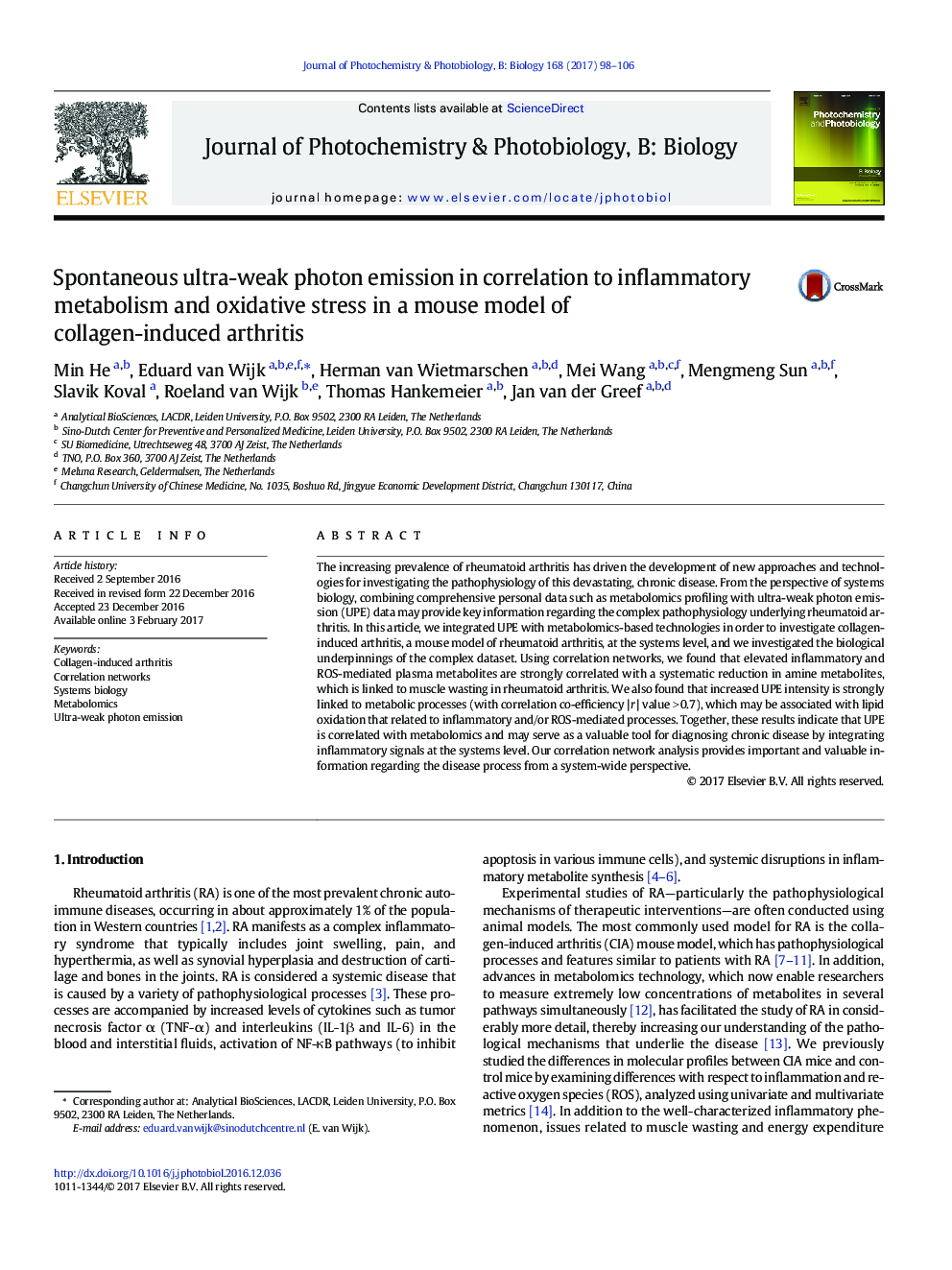| Article ID | Journal | Published Year | Pages | File Type |
|---|---|---|---|---|
| 4754537 | Journal of Photochemistry and Photobiology B: Biology | 2017 | 9 Pages |
â¢Correlation networks visualized differences of correlations in CIA mice versus control samples.â¢UPE was correlated with specific classes of metabolites.â¢By linking UPE to metabolomics, potential applications of UPE for disease characterization could be identified.
The increasing prevalence of rheumatoid arthritis has driven the development of new approaches and technologies for investigating the pathophysiology of this devastating, chronic disease. From the perspective of systems biology, combining comprehensive personal data such as metabolomics profiling with ultra-weak photon emission (UPE) data may provide key information regarding the complex pathophysiology underlying rheumatoid arthritis. In this article, we integrated UPE with metabolomics-based technologies in order to investigate collagen-induced arthritis, a mouse model of rheumatoid arthritis, at the systems level, and we investigated the biological underpinnings of the complex dataset. Using correlation networks, we found that elevated inflammatory and ROS-mediated plasma metabolites are strongly correlated with a systematic reduction in amine metabolites, which is linked to muscle wasting in rheumatoid arthritis. We also found that increased UPE intensity is strongly linked to metabolic processes (with correlation co-efficiency | r | value > 0.7), which may be associated with lipid oxidation that related to inflammatory and/or ROS-mediated processes. Together, these results indicate that UPE is correlated with metabolomics and may serve as a valuable tool for diagnosing chronic disease by integrating inflammatory signals at the systems level. Our correlation network analysis provides important and valuable information regarding the disease process from a system-wide perspective.
